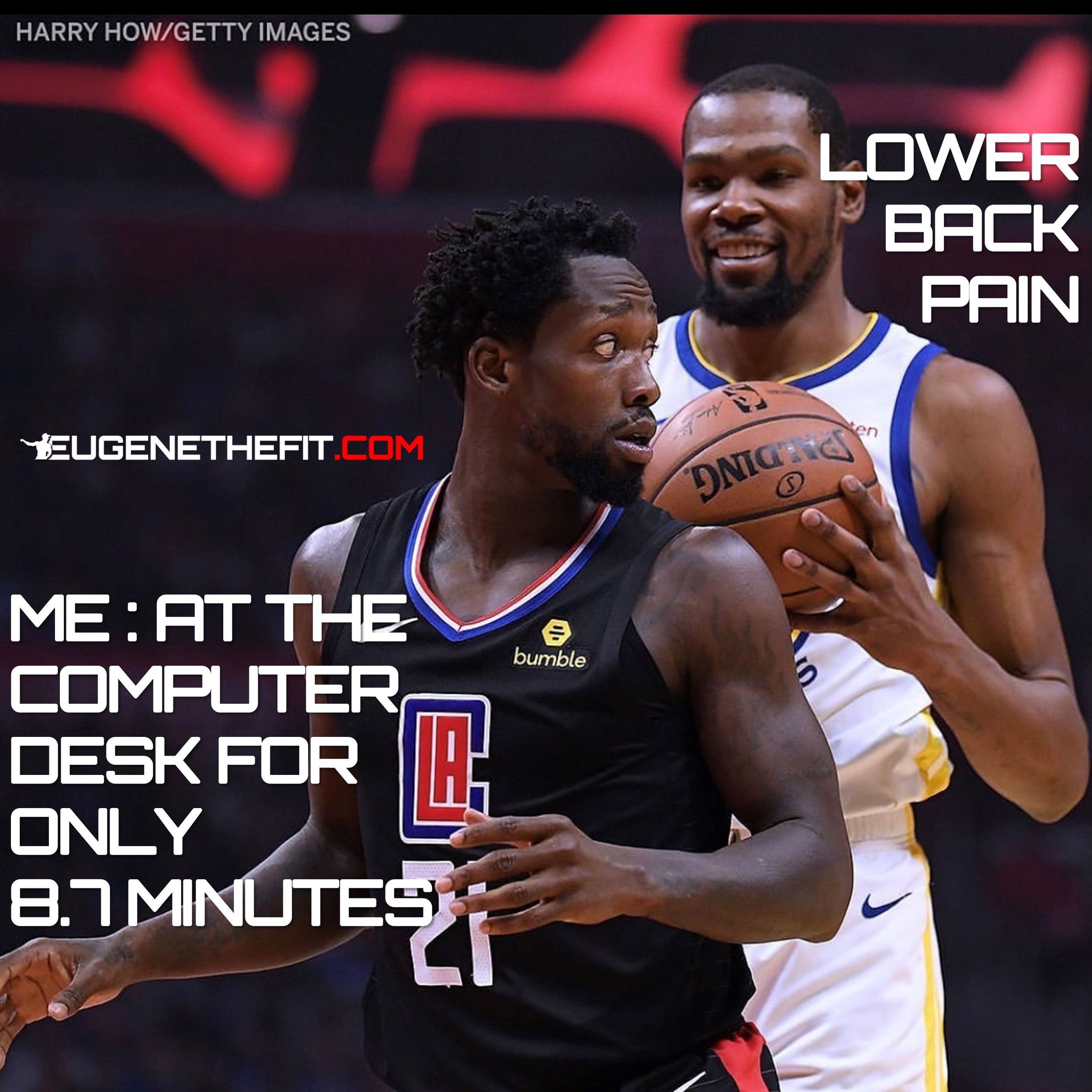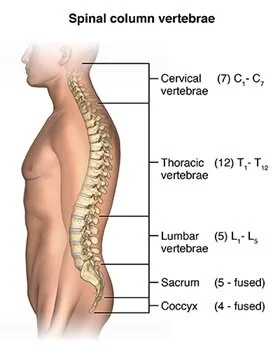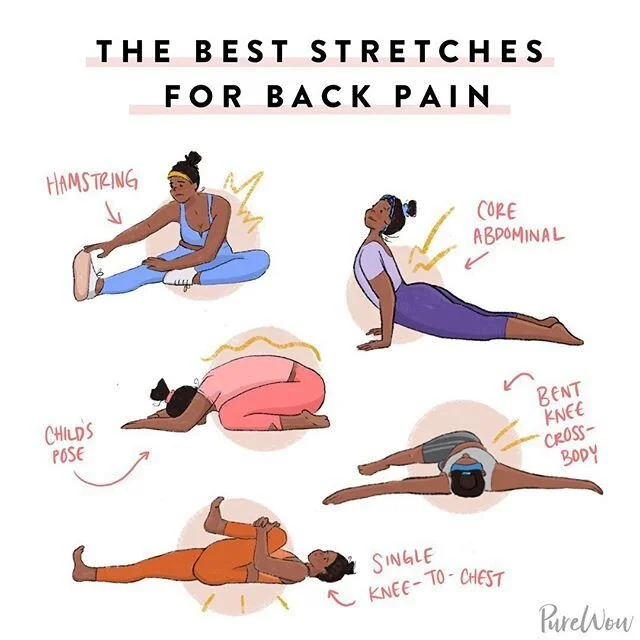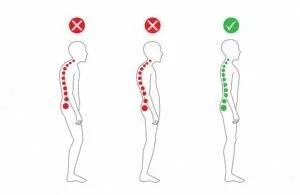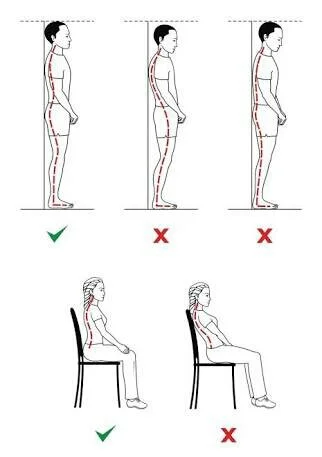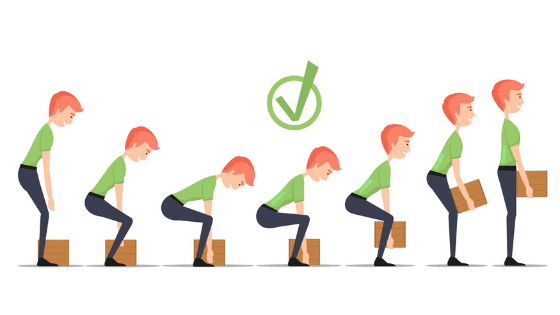How To Treat Lower Back Pain
The leading cause of disability in the world [1], the precursor to countless mood swings, and the enforcer of laziness.. Not because you don’t have the drive, but because it hurts to even consider the possibility of thinking about gettin’ up, gettin’ out, and gettin’ something.
I’ve fought my share of battles with lumbar suffering and stiffness. Partly due to my flatfootedness, partly due to my slight scoliosis, and partly due to my previous tendency to neglect seated posture.
There’s a way out. Lower back pain is more often than not unrelated to structural damage, so remedies short of medical care is what we’ll focus on (see this article for developing the rest of your back).
How To Stop Lower Back Pain
What Causes Lower Back Pain
Lower back affliction is a universal unifier; equal opportunity lender. Couch potato to world class athlete, we’re all potential suitors. An estimated 80% of the population has or will experience lumbar pain in their life [9].
What’s interesting is you feel it on the lower side of the back, yet that’s rarely the source of the problem. Our body is such a connected chain that issues with functionally linked muscle groups can give your back trouble due to overcompensation and/or imbalances.
Of course if there’s a traumatic force event like a chaotic fall, car wreck, or if you awkwardly move resistance IE a heavy deadlift with poor form.. You can strain a muscle or induce excess wear, but there’s a distinction between a hurt and injured back.
Low level hurt can be from a knot or mild strain, which can be worked on or will recover with moderate attention and improved behavior.
Mild to severely hurt involves a lightened load and time to recover along with better daily treatment.
Injured requires a medical opinion.
Note: with age and a less than ideal lifestyle the discs in our backs tend to degenerate. This isn’t the most common cause of back pain, but is one. The suggestions I lay out will help slow and possibly prevent this degeneration from being a burden as you age, if implemented.
Another note: if you consciously and consistently carry out remedies, yet no pain relief occurs - seek medical attention to be safe. If after a few weeks or so no change occurs see a physician. For harsh, force impact events see a doc immediately.
Common Causes Of Lower Back Pain
Muscle knots
Low quality seated posture
Too much sitting
Obesity
Sedentary lifestyle
Bad standing posture
Weak core muscles
Inadequate flexibility
Poor lifting form
Less than ideal sleep position
Tight hamstrings
Tight glutes
Tight hips
Sprains
Strains
Spasms
Sciatica
Less Common Causes Of Lower Back Pain
Herniated, bulging, or ruptured disc
Arthritis
Osteoporosis
Intervertebral disc degeneration
Scoliosis
Spina bifida
Spondylosis
Kyphosis
Lordosis
Flatfootedness
And so on..
How To Fix Lower Back Pain
The spine functions the way it does as result of the array of supportive and functional muscles. The combo allows you to bend, rotate, stand upright, hyperextend, and be the human joystick you are.
Your lower vertebrae, the lumbar, supports the lion’s share of your upper body weight. Between each vertebrae is a disc employed to absorb shock. Without you’d be a human joystick and a human firecracker because sparks would fly from all of that vertebral friction.
To fix and even prevent back pain you have to eliminate disruptions in your back’s ability to effortlessly do its duty. At times lumbar pain is the conclusion of excessive pressure on discs signaling other muscles to go outside of their listed job description; then the dominos begin to fall.
There are a few ways to shake lumbar discomfort. Some work in isolation, some provide temporary relief, some exhibit long-term benefit in concert with one another:
Stretch
Regular stretching will aid in your pain relief by not only increasing range of motion, but by relaxing tense muscle fibers.
Self-Myofascial Release
Self-myofascial release is a go-to way to increase blood flow and apply pressure to a particular area, especially where knots thrive. Doing so will immediately.. Temporarily relieve most lower back pain.
It’s basically a self-massage.
Myofascial tissue is muscular tissue. A con in life is this tissue getting “balled up” into sensitive places causing pain to radiate. We refer to these as knots or trigger points. Trigger points contract involuntarily even as we expect our muscles to relax. To relieve the tension of these spots you use trigger point therapy, which is simply applying pressure to relieve the tension; myofascial release. You can use tennis balls, foam rollers, etc..
Continuing to persistently apply pressure for release will influence the tension to go away for good, unless you continue what gave you the knot in the first place without preventative measures. The ways in which trigger points cause pain in other areas is called referred pain.
Price
PRICE is an acronym signifying steps to take in response to pain, notably sprains or strains that induce swelling.
Protect, rest, ice, compress, and elevate:
Protect the muscle from further injury
Rest it from strenuous activity
Apply ice to reduce swelling
Compress with an ace bandage or something similar to limit swelling
Elevate the trouble spot above your heart when possible to minimize pain and swelling (try prone position placing a pillow under your hips)
Personal note: minus swelling i find great back pain relief from heat therapy. I have a chronically nagging lumbar due to the way my body is designed, so whenever possible i sit with a heating pad on my back. When consistent i go indefinitely without back pain.
Corrective Exercises
Lumbar woes could be the result of direct muscular weakness, as well as supportive muscular weakness. To ensure you have adequate spinal support.. Beef up your entire core.
The core is made of: pelvic floor muscles, transverse abdominis, rectus abdominis, internal and external obliques, quadratus lumborum, multifidus, and erector spinae.
Sit ups might be what comes to your mind, but they won’t quite cut it. There are endless ways to build a core:
Planks, squats, deadlifts, Russian twists, oblique crunches, back extensions, reverse planks, hip bridges, hollow holds, and so on. Target core a few times weekly and you’ll be good as new.
Bonus: try this routine each day if your back tends to be stiff when you get out of bed in the morning:
10 supine pelvic tilts
10 supine spinal twists
10 hip bridges
10 supine leg lifts
10 cat to cow poses
Posture
Posture is the word we use for the position in which you hold your body. The position in which you hold your body impacts the amount of pressure gravity forces down on a specific area of your spine. What muscles assist in your everlasting battle against gravity matters, so posture matters, for depending on how your body is held certain supportive muscles will or will not chip in as they are intended to. It’s about forcing neutral spine alignment.
Sleep Posture
Back sleeper? Place a pillow under your knees.
Side sleeper? Go fetal position with a pillow between your knees.
Stomach sleeper? Place a pillow underneath your hips.
Ideal Posture For Standing Or Sitting
Note: the side effects of poor seated posture extend beyond mere lumbar pain - how sitting the wrong way hurts.
Lose Weight
The spine is to support and distribute your weight. If you have an excess amount of weight there’ll be extra pressure on your spine to perform; you don’t want extra pressure on your spine to perform. Dropping a few pounds can contribute to relieving that extra pressure and in turn relieve that pain (how to get long-term fat loss results).
Other Methods Of Lumbar Pain Relief
Anti-inflammatory medications
Muscle relaxers
Oral and/or topical analgesics
Kinesiology tape
Note: if your hardships originate from injury, lessen your load exponentially if you choose to continue exercise amidst recovery. It’s even fair to consider the use of a weight belt, but don’t fall in love. When you’re back to full health shake the belt.. It takes away from your core’s full participation in full body movements.
How To Prevent Lower Back Pain
Most preventative measures mirror what it takes to correct your lumbar burden.
A worthy addition is to include a solid pre workout warm up. Getting the blood pumping, particularly to the core and back, will limit injury risk (why you should do a dynamic warm up).
Prevention measures include:
The bonus morning warm up
Pre workout warm up
Regular stretching of the hamstrings, hips, glutes, quadriceps, core, and back
Self-myofascial release 2-3 times weekly
Strengthening your core
Quality shoes
Maintaining a healthy weight
Solid posture in all positions
When forced to sit for prolonged periods get up and move around periodically, before pain sets in
Lifting objects with good form
Note: one may assume a weight belt would be a serviceable preventative measure, yet that assumption is false. Weight belts assist your core muscles when lifting, but this assistance is a handicap, since your core is being partially taken out of the picture. A weak core is a pain source, so you want every chance to strengthen your spine supporters available.
My Thoughts
When it pertains to resistance training and high intensity cardio.. If the warm up doesn’t offer full or nearly full pain relief you may want to lighten the load or consider resting. As much as it may agonize you to do so; preventing a more severe problem is always the road to faster recovery.
Some preventative measures are suggestive, but what’s mandatory is: strengthening your core, enhanced posture, regular stretching, self-myofascial release, warm ups, and lifting objects like you actually care about your back.
So, It’s About That Time
The back is complicated, because it does so much. Match its complication with tactics that’ll allow you to be the best member of society you can be. Beating the depressant often called lumbar pain can be done by correcting and preventing it from ever recurring. Comment and let me know your experience with back pain and relief. You’re better when you can, without pain, put those muscles to use; Be Great.
Sources:
[1] mayoclinic.org/diseases-conditions/back-pain/symptoms-causes/syc-20369906
[2] ninds.nih.gov/disorders/patient-caregiver-education/fact-sheets/low-back-pain-fact-sheet
[3] pinterest.com/pin/697354323538980649/
[4] kauveryhospital.com/news-events/january-trigger-points
[5] fairbankschiropractic.com/articles/135/what_is_trigger_point_therapy.php
[6] spine-health.com/blog/poor-posture-causing-your-back-pain
[7] centralperformance.com.au/latest-news/low-back-pain-keeping-a-neutral-spine-posture
[8] utahpainrelief.com/how-to-lift-heavy-things-without-hurting-your-back/
[9] acatoday.org/patients/what-is-chiropractic/back-pain-facts-and-statistics
[10] hopkinsmedicine.org/health/conditions-and-diseases/lumbar-strain-weight-lifters-back
[11] viplab.in/blog-details/ideal-posture-for-standing-sitting-and-sleeping/


